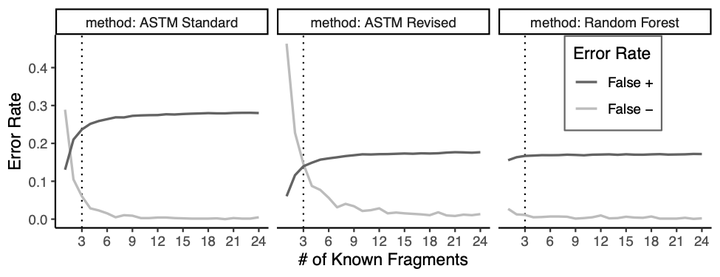Evaluation and comparison of methods for forensic glass source conclusions

Abstract
Float glass, a common type of glass used in windows and doors, can be important evidence in the investigation of a crime. If fragments are optically indistinguishable, they may be distinguishable in their chemical compositions, which can be measured using inductively coupled mass spectrometry with a laser add-on (LA-ICP-MS) [14]. If the measurements are “similar enough” then the recovered fragment is indistinguishable from the crime scene glass [1]. Recently, Park and Carriquiry [10] proposed using machine learning methods to establish probabilistic source conclusions for glass, and found that these methods have lower classification error than traditional methods. Using an experimental database of glass elemental concentrations to simulate different forensic scenarios, we examine the results from two different classifiers to understand why learning algorithms appear to outperform traditional methods when making source conclusions for forensic float glass questions. By analyzing each step in the recommended ASTM decision process, we conclude that the standard ASTM method is not the optimum and that more data are required to determine a better comparison rule for source conclusions based on the chemical makeup of float glass.